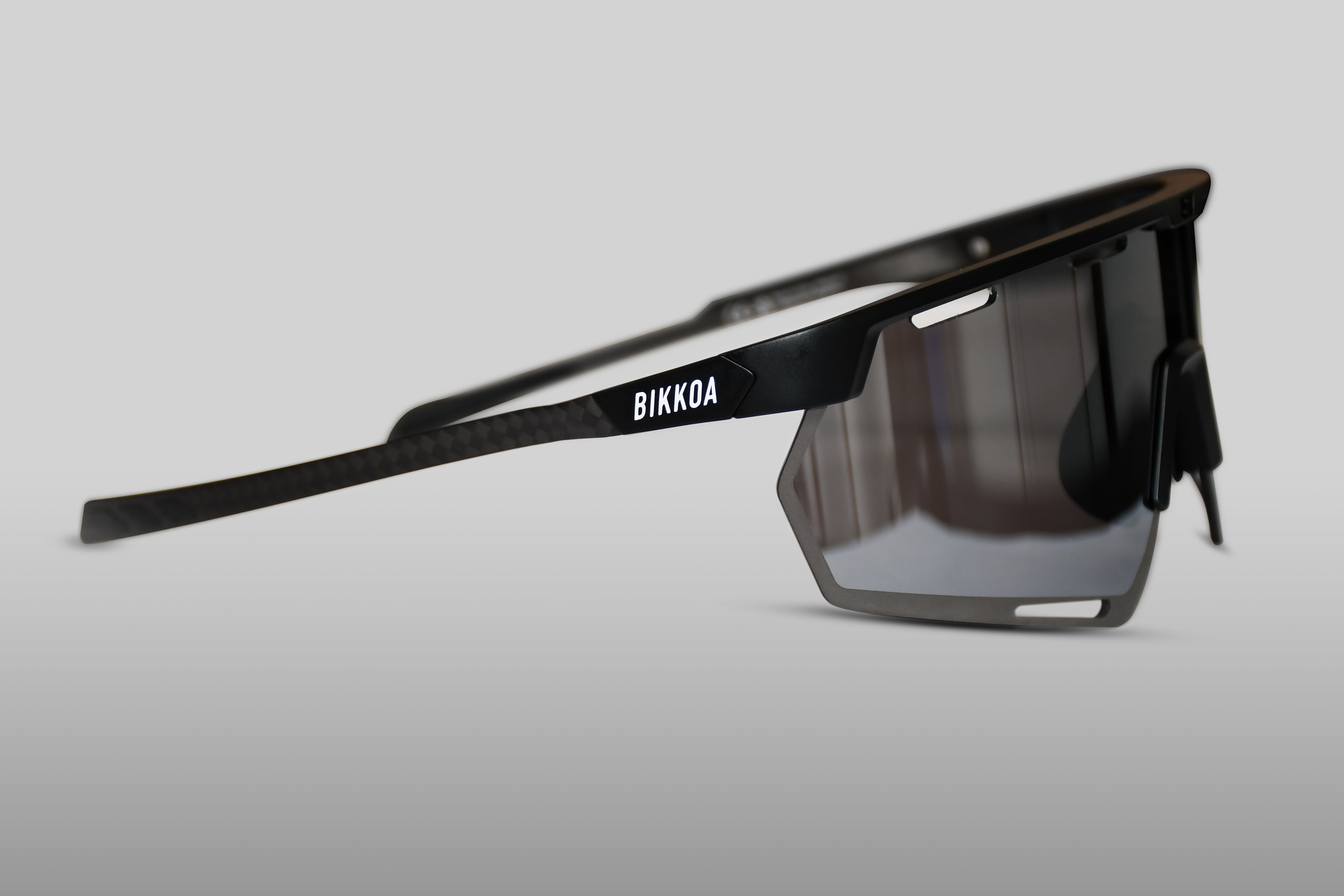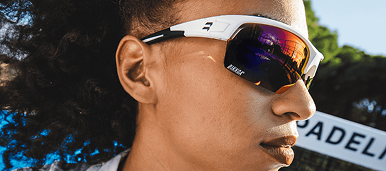Padel is considered one of the sports with the highest risk of eye injury.
The growth of this sport has led to a very significant increase in moderate and severe eye injuries over the last 4 years. Often, these injuries may require surgery or be irreversible.
The padel ball weighs about 50 grams and can reach speeds over 150 km/h inside an enclosed court, which has small dimensions of 10 x 20 meters. The element of surprise is present in many actions as there are unexpected rebounds against its glass walls, the metal structure, or the court net.
It must be taken into account that the eyes are a very delicate and exposed organ and that the diameter of the padel ball is slightly larger than the orbital cavity of the eye, often impacting directly on the eye or on the edge of this bony cavity causing significant injuries that could easily be avoided.
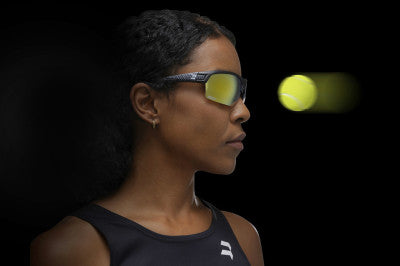
Types of eye injuries
Open eye injuries
Eye injuries can be open or closed.
Open injuries refer to an eye perforation. This can result in a loss of continuity of the eyeball, potentially causing even the exit of its contents. These are extremely serious cases that require urgent intervention, usually involving foreign bodies inside the eye and where there is a high risk of infection. If an eye rupture occurs due to a strong high-speed impact, the eye may be lost and require an implant.
In these cases, the most common scenario is a high percentage of irreversible vision loss in the affected eye.
Closed eye injuries
Closed eye injuries are commonly referred to as eye contusions. They basically refer to the impact of the padel ball against the surface of the eye at high speed, causing the rupture of various structures of the affected eye.
Irritation, inflammation, glaucoma (optic nerve damage), hemorrhages, or tears can be some of the consequences if we do not protect the eyes with padel glasses.
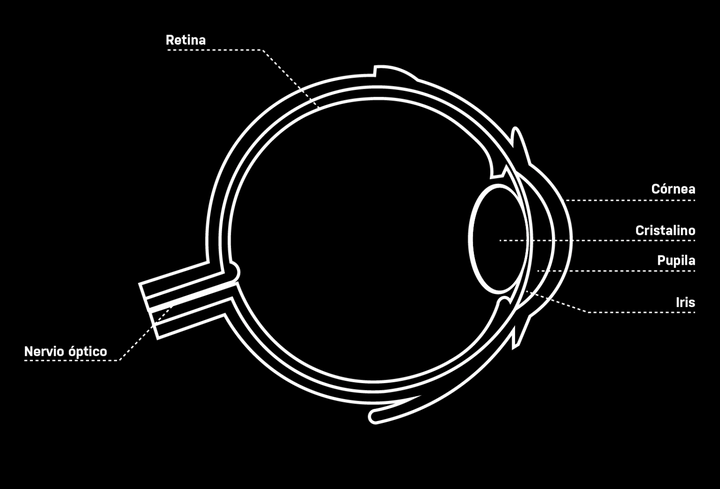
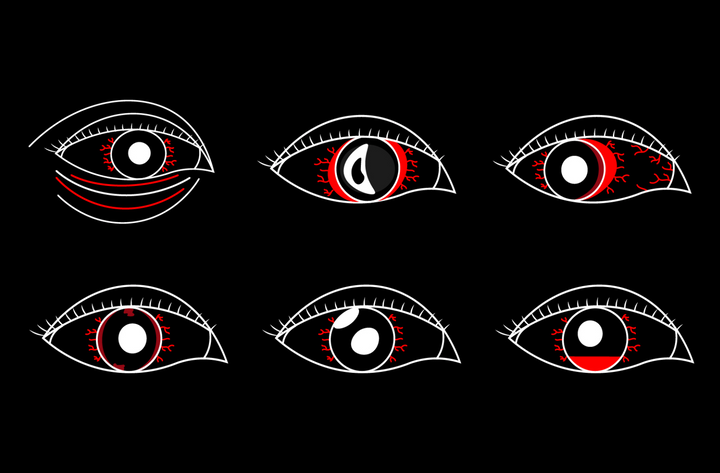
Retinal Detachment
There are different types of retinal detachments. Usually as a result of strong ball impacts, a tear or perforation occurs in the retina, which is located right at the back of the eye. Through the perforation, there is a possibility that fluid may leak and separate the retina from its underlying tissues. In up to 10% of cases, a strong eye contusion can lead to retinal detachment.
Corneal Erosion and Abrasion
The cornea is the outer layer of the eyeball. A mild or moderate impact can affect the transparent surface of the cornea, the front part of the eye that allows light to pass through and acts as a protective shield for the eye, protecting it from germs, dust, and other particles and risk factors. Sometimes superficial 'scratches' occur that cause discomfort, pain, and photophobia, very common in sports like pádel.
Entry of External Agents into the Eye
The entry of foreign bodies into the eye such as sand present on some courts can cause tearing, pain, temporary photophobia, and eyelid blockage, which can lead to severe infections or glaucoma. The direct entry of sweat into the eyes, which can be prevented by using pádel glasses, can also cause irritative conjunctivitis or hyperemia (redness in the eye).
Iris Sphincter Rupture
The pupil remains dilated if the muscle responsible for pupil contraction, the iris sphincter, breaks. In these cases, the pupil risks remaining permanently dilated, irreversibly, which can cause severe photophobia, a very uncomfortable condition in daily life.
Subconjunctival Hemorrhages and Hyphemas
A strong direct blow can cause a hyphema, bleeding in the front area of the eye, which causes intense pain and blurred vision.
With the increase in blood pressure derived from an intense point in your pádel match, your eye can also be affected by a subconjunctival hemorrhage due to the rupture of a blood vessel, leaving blood trapped inside the eye.
Orbital Bone Fracture
Injuries around the eye area from direct impacts can lead to bruises, redness, swelling, high sensitivity, and intense pain. If the blow is near the eyeball, it can cause blurred or double vision.
Traumas caused by involuntary impacts from a partner are common. Paddle racket hits to the face are very frequent. The speed and dynamism of pádel, a sport played in pairs at close distance and where positions are exchanged, cause numerous eye injuries caused by accidental elbows or racket hits.
UV Radiation Injuries
If you regularly play pádel on outdoor courts, prolonged exposure to UV rays can be harmful in the long term, potentially leading to cataracts or accelerating macular degeneration.
How to Prevent Eye Injuries
According to a report by the Swedish Medical Association, it is proven that using glasses to play pádel reduces the risk of eye injuries by up to 95%, which is why more and more ophthalmologists insist that the use of technical glasses that protect the player's eye health be mandatory; in fact, it is the most effective tool to prevent eye injuries that can become irreversible.
It is essential that the pádel glasses you choose fit securely, are comfortable, lightweight, and durable, and that their lenses have the appropriate technology and protection against impacts. All these requirements have been strictly followed during the development process of the GOAT pádel glasses, specifically designed to protect your eyes and enhance your performance on the court.
In case of injury, it is important to avoid rubbing the eye, rinse the eye with sterile saline solution to remove possible foreign particles and relieve pain, always seeking medical attention for a proper diagnosis.
Sports like Squash have already undergone this evolution thanks to the push from their International Federation (WSF), which emphasizes the mandatory use of protective glasses to prevent possible injuries.
Be aware of the necessary safety measures in pádel and give importance to the use of appropriate pádel glasses to protect yourself from both trauma and UV rays and the LED lights of indoor courts. Avoid injuries and enjoy your passion for pádel responsibly.


